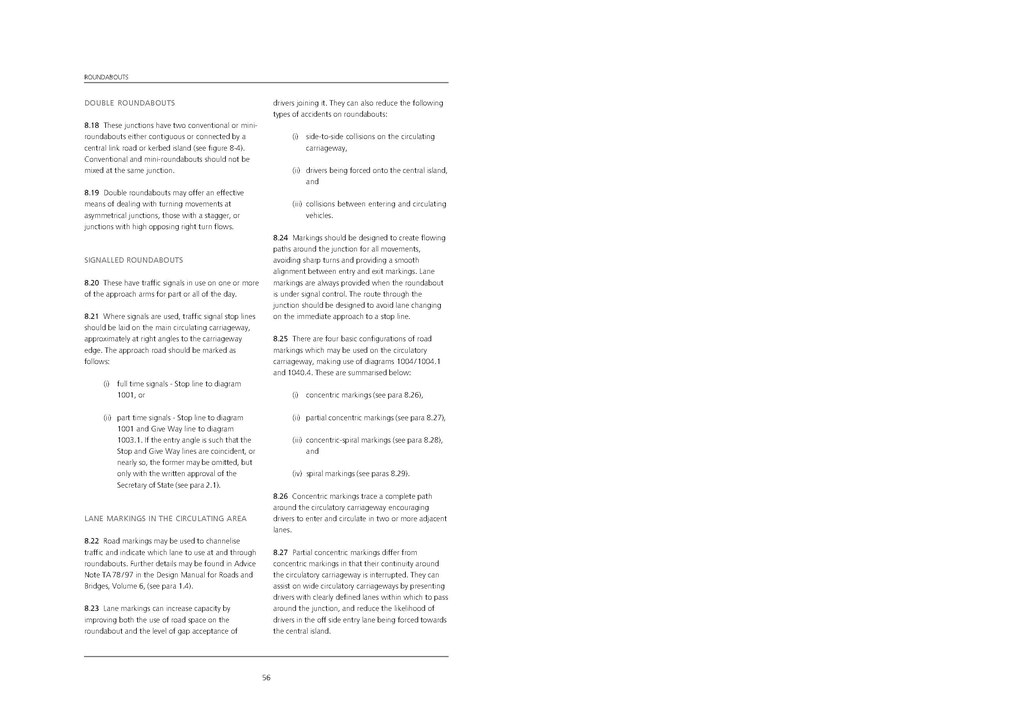DOUBLE ROUNDABOUTS
8.18 These junctions have two conventional or mini-roundabouts either contiguous or connected by a central link road or kerbed island (see figure 8-4). Conventional and mini-roundabouts should not be mixed at the same junction.
8.19 Double roundabouts may offer an effective means of dealing with turning movements at asymmetrical junctions, those with a stagger, or junctions with high opposing right turn flows.
SIGNALLED ROUNDABOUTS
8.20 These have traffic signals in use on one or more of the approach arms for part or all of the day.
8.21 Where signals are used, traffic signal stop lines should be laid on the main circulating carriageway, approximately at right angles to the carriageway edge. The approach road should be marked as follows:
(i) full time signals - Stop line to diagram 1001, or
(ii) part time signals - Stop line to diagram 1001 and Give Way line to diagram 1003.1. If the entry angle is such that the Stop and Give Way lines are coincident, or nearly so, the former may be omitted, but only with the written approval of the Secretary of State (see para 2.1).
LANE MARKINGS IN THE CIRCULATING AREA
8.22 Road markings may be used to channelise traffic and indicate which lane to use at and through roundabouts. Further details may be found in Advice Note TA 78 / 97 in the Design Manual for Roads and Bridges, Volume 6, (see para 1.4).
8.23 Lane markings can increase capacity by improving both the use of road space on the roundabout and the level of gap acceptance of drivers joining it. They can also reduce the following types of accidents on roundabouts:
(i) side-to-side collisions on the circulating carriageway,
(ii) drivers being forced onto the central island, and
(iii) collisions between entering and circulating vehicles.
8.24 Markings should be designed to create flowing paths around the junction for all movements, avoiding sharp turns and providing a smooth alignment between entry and exit markings. Lane markings are always provided when the roundabout is under signal control. The route through the junction should be designed to avoid lane changing on the immediate approach to a stop line.
8.25 There are four basic configurations of road markings which may be used on the circulatory carriageway, making use of diagrams 1004 / 1004.1 and 1040.4. These are summarised below:
(i) concentric markings (see para 8.26),
(ii) partial concentric markings (see para 8.27),
(iii) concentric-spiral markings (see para 8.28), and
(iv) spiral markings (see paras 8.29).
8.26 Concentric markings trace a complete path around the circulatory carriageway encouraging drivers to enter and circulate in two or more adjacent lanes.
8.27 Partial concentric markings differ from concentric markings in that their continuity around the circulatory carriageway is interrupted. They can assist on wide circulatory carriageways by presenting drivers with clearly defined lanes within which to pass around the junction, and reduce the likelihood of drivers in the off side entry lane being forced towards the central island.
56
